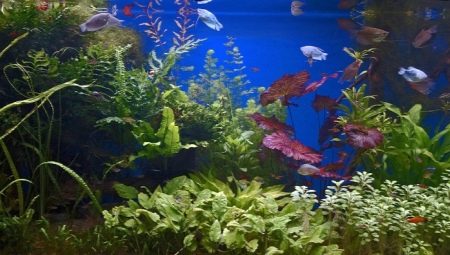A home aquarium is a beautiful detail of the interior, as well as an excellent hobby for lovers of contemplation of underwater life. However, in a city apartment, it is difficult to artificially create a marine environment - for this it is necessary to measure the exact proportions of salt each time and dissolve it in water. Do not despair - a freshwater aquarium is no less, and maybe even more interesting, like its inhabitants. About his arrangement and the selection of suitable "residents" will be discussed in our article.
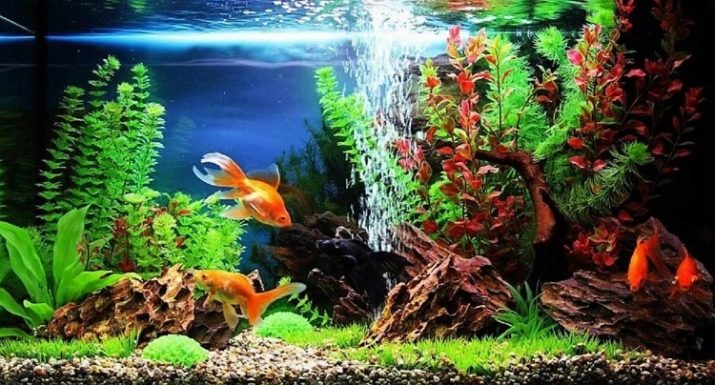
Freshwater aquarium: features of selection and installation
Are you an amateur aquarist and finally decided to buy your first aquarium? Where to begin? What equipment is worth buying? What kind of fish can be populated in fresh water?
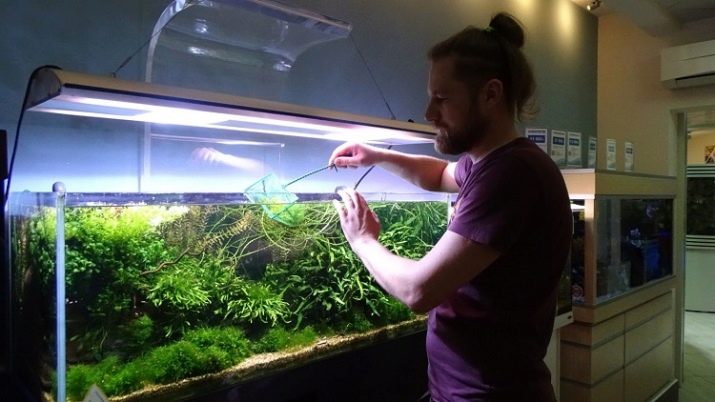
Tank volume
The most suitable capacity is from 100 to 250 liters. In such a capacity, a fairly stable biological environment can be established, which will be easy to care for.
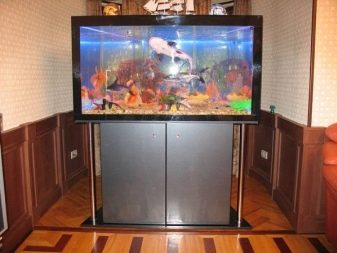

Appearance
In the modern market for aquarium products, you can find tanks for every taste and color, different shapes and sizes. Therefore, you can easily choose an aquarium suitable for your interior. Focus on your taste preferences and financial capabilities. It is advisable that when you go to the store you already know exactly where the equipment will stand and how much space it will take there.
So it will be easier for you to navigate in size.
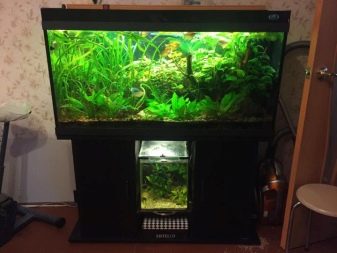

Equipment
Some manufacturers of aquariums put them on sale already fully equipped with everything necessary. And sometimes you just have to buy a container equipped with only a lid. Here's what to stock up in this case:
- a filtration system designed to clean water from pet waste products;
- a water heater that maintains a constant temperature of + 25-26 degrees, comfortable for most freshwater inhabitants;
- a compressor that saturates the aqueous medium with oxygen.
When buying a filter, be guided by the following advice: its performance should be at least three tank volumes. For example, if you purchased a 120 liter aquarium, then your choice is a 400 liter filter.
The power of the heating element is calculated as follows: 1 W per 1 liter.
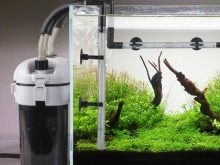


Many aquariums are equipped with a bottom filtration system called false. Its structure is as follows: a set of special tubes is placed below, at the bottom of the aquarium, a grid is placed on top, and then all this is sprinkled with a soil mixture. I want to note that if the design of your freshwater "little world" includes a false version, choose small pebbles or pebbles as a substrate, but not sand. Otherwise, the grill may clog and the device will fail.
Freshwater home aquariums can also be equipped with so-called ducts., which represent a certain system of continuous supply of water to the tank and its simultaneous outflow into the sewer. Thus, only clean fresh water is always in your tank. But the ducts will not work if the quality of your tap water leaves much to be desired or if it changes depending on the season or other parameters.
The best solution is to periodically turn on / off the system to facilitate the process of replacing water.


Installation location
The optimal location of the aquarium - away from heating appliances, drafts, away from incident sunlight. Put the tank on a flat and smooth, stable and strong surface that can withstand its mass with water and all the inhabitants.
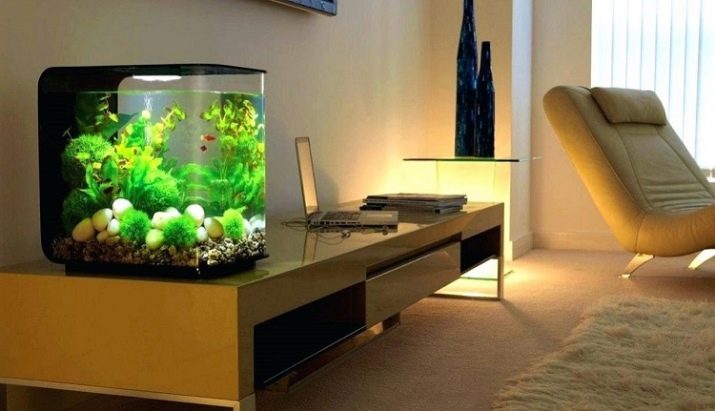
Cleaning
It is best to carry out the procedure once every 7 days. You must:
- clean the walls of the tank;
- wash the filters;
- change the water (not all, about 25% of the total volume).
Cleaning the aquarium takes about an hour.
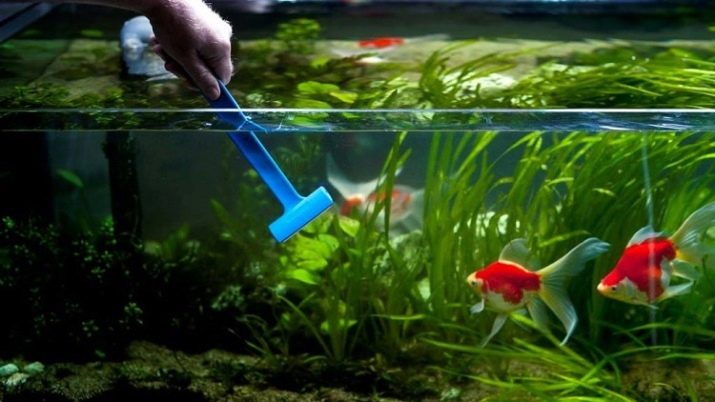
What water to use?
It is allowed to pour tap water into a freshwater aquarium without resorting to specialized pre-treatment systems. The fact is that modern wastewater treatment plants remove almost all harmful components from it, including chlorine. But in the seasons of rains and snowmelt, the water becomes dirtier, so it is recommended to prepare it with the help of special chemicals that can be found in aquarium shops or ordered on the Internet.
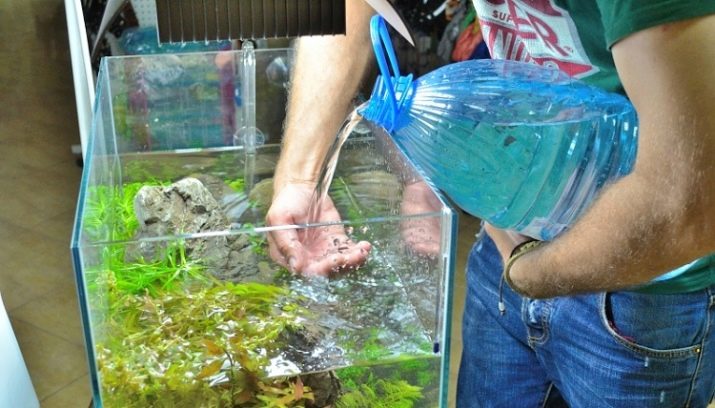
Freshwater flora
It is advisable to populate your first aquarium with unpretentious plants: anubias, hornwort, Javanese moss, echinodorus. Before planting anything, learn more about the inhabitants you plan to purchase. They can nibble leaves of plants and spoil their root system.
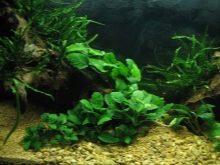
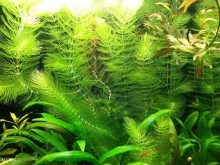
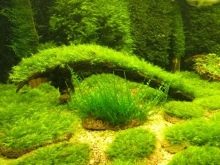
The most beautiful aquarium fish
So we finally got to the main inhabitants of the aquarium - fish. Consider some of the most beautiful freshwater varieties.
Discus
Stunningly bright fish, striking in its unusual appearance. The discus has a body flattened from the sides, and its length is almost equal to the height. These fish have a lot of colors: there are yellow, electric blue, orange discus, with spots or stripes. Such a pet will delight you not only with its beauty, but also with quick wit - discus get used to the owner, recognize him, take food from his hands.
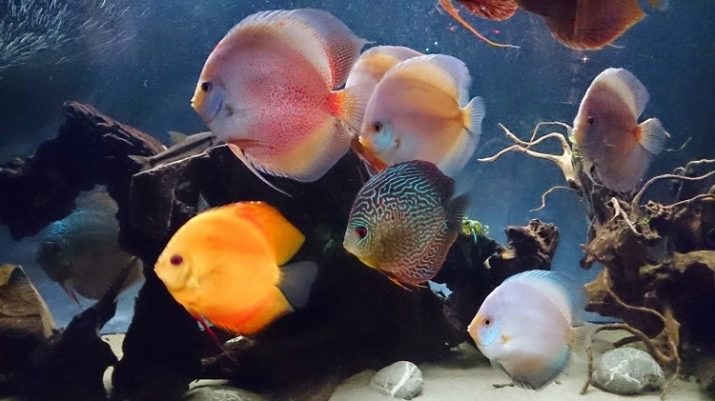
gold fish
We could not fail to mention the queen of a freshwater aquarium. Perhaps this is one of the most beloved and common fish. Appearance: an elliptical body, a pointed triangular muzzle, an elongated dorsal fin, starting from the middle of the body. Caudal fin bifurcated; anal fin shortened. The color of a goldfish, contrary to the name, can be not only golden red or yellow, but also white, black-blue, pinkish. Variegated individuals are also found.
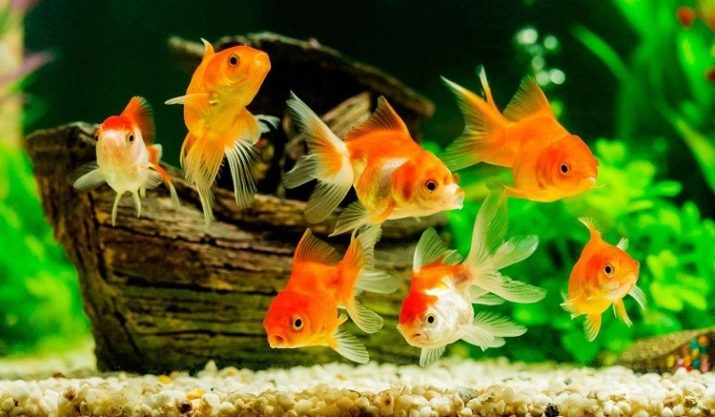
Angelfish
A swimming angelfish resembles a triangle in its shape. Such an illusion is created due to the high body flattened from the sides and elongated fins - dorsal and anal. The fins on the chest hang like a mustache or thread. The tail is shortened, along the edges there are long processes - “rays”. The color of scalars is very different: transverse black stripes on a bright background, chaotic spots; monophonic representatives amaze the imagination with shades of turquoise, electric blue, pink, golden. Coal black angelfish are found.
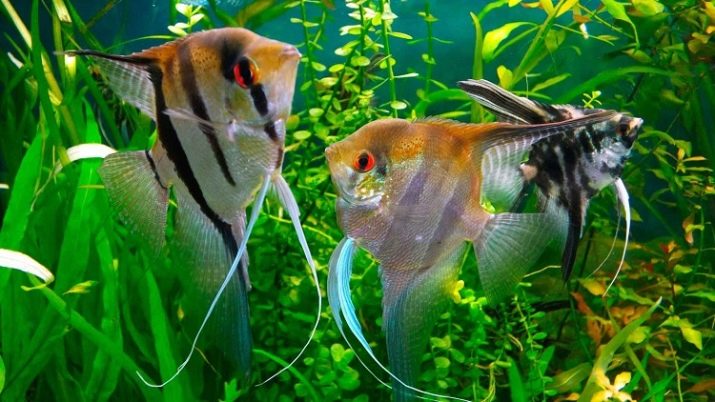
Guppy
Probably, everyone at least once in his life saw small silver fish in an aquarium with stunning veiled tails painted in all colors of the rainbow. These are male guppy fish. The females of this freshwater aquarium inhabitant are more modest. A distinctive feature of guppies is the ability to give birth to offspring. Their breeding in captivity is an easy and exciting process.
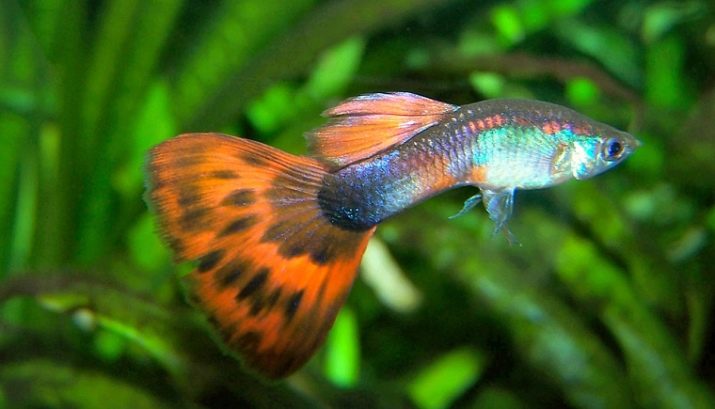
Gourami pearl
Another handsome man worthy of your attention. Appearance: oval body, oblate on the sides, filiform abdominal fins. Most notable is the color that gave the name to the fish: against a silver-purple background, bright spots like pearls are randomly scattered. The gourami's back is tawny, the neck and belly are orange. A black line runs in the middle of the body.
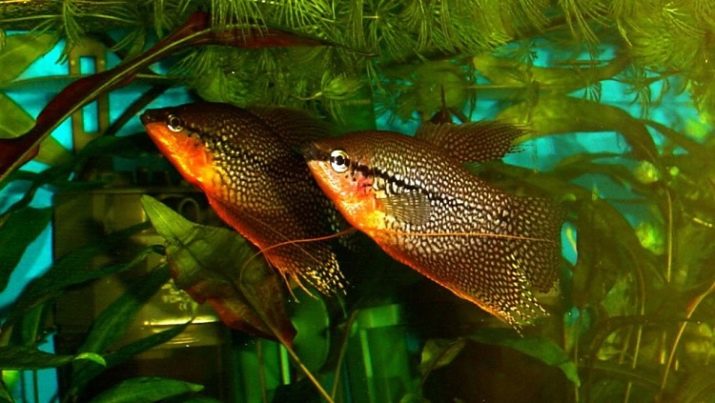
Neons
Their main distinguishing feature is, of course, a bright blue strip resembling a sign glowing in the dark. Neon's abdomen is bright red. These small fish lead a flock of life. It is very interesting to watch how the "company" of these bright babies hustles back and forth around the aquarium.

Labidochromeis yellow or hummingbird cichlid
Stunning bright and fairly large (up to 10 cm) fish. Appearance: an elongated body, a convex forehead, well-defined large lips, expressive eyes. Bright yellow color, on all fins except the caudal, there is a black edging. Labidochromis yellow is an endemic resident of Lake Malawi in Africa.
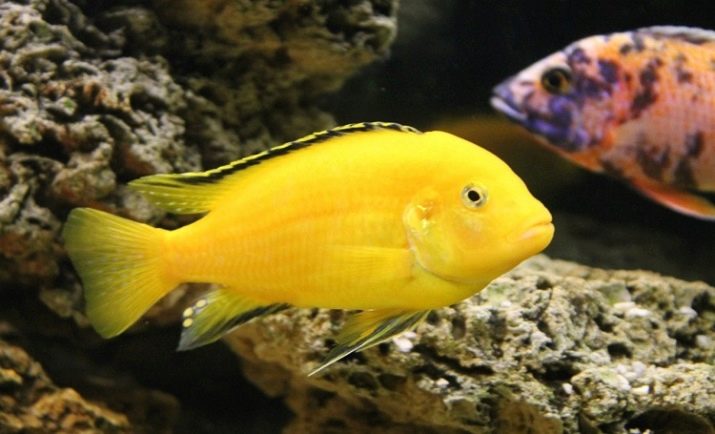
Chromis handsome
He deserved such a name not in vain - this representative of the Cichl family flaunts a very bright color and rather impressive parameters (10-15 cm). The body of chromis is oval, dense; steep forehead, large lips and eyes. Turquoise spots are randomly scattered on the red-orange background of the carcass, which also pass to the fins. On each side in the middle there is a round dark spot.
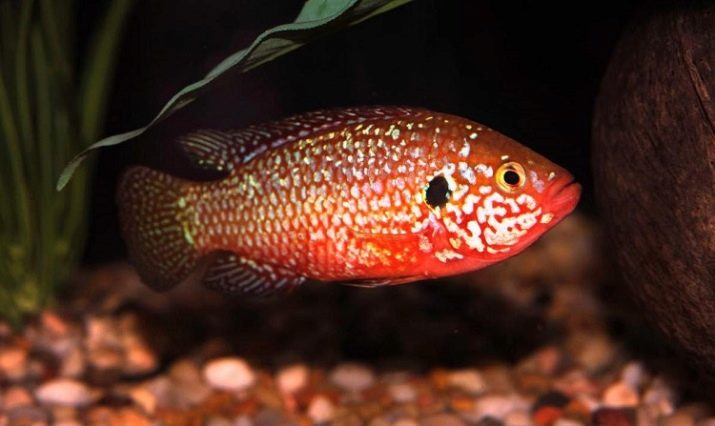
Rare species of fish
We met typical representatives of freshwater aquariums. The time has come to learn about the rather rare individuals that can be found in these conditions.
Nile elephant
This fish attracts amateurs and professionals from aquariums not with its bright color, but with its unusual appearance: a narrow gray body with small fins passes into a pointed head, ending with ... a trunk! Yes, this is how the Nile elephant adapted to the near-bottom lifestyle: with the help of this proboscis, he digs in the ground and digs out small crustaceans and other underwater small fry, which serves him as food.
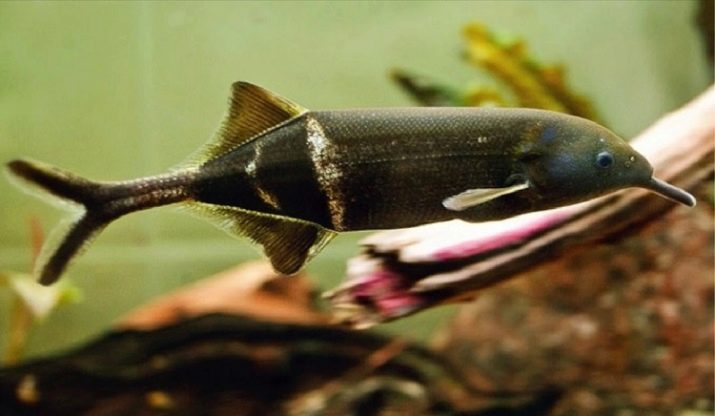
Lepidosiren paradox
In the wild, lives in the Amazon. A unique feature of this creature is that it is double-breathing, that is, it can do without water for some time. When the reservoirs dry out during the dry period, these amazing serpentine creatures make a “nest” for themselves in the silt and lie in hibernation while breathing atmospheric oxygen.

Black knife
Another inhabitant of the Amazonian depths. In nature, it can “extort” up to half a meter in length; in the aquarium, of course, it is smaller. The knife looks rather strange: it has no fins on the back and belly, but the anal, turning into a "skirt", stretches along the whole body of the fish. There are white spots on the tail and on the muzzle. The black knife is famous for its ability to generate electricity, as well as swim backwards.
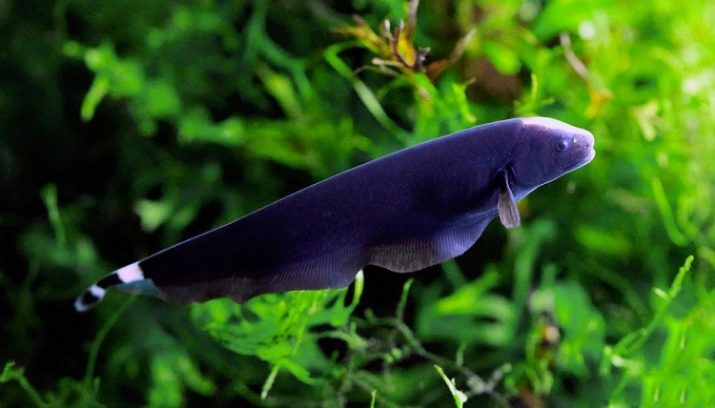
Pantodon Buchholz
Another "African." The appearance of this freshwater specimen is specific: the lateral fins are arranged like wings. By the way, pantodon also uses them in this capacity, jumping out of the water for prey. The eyes of the fish are large, with a red border, pointing up. There is a huge mouth. On the ventral fin there are filiform processes. Pantodon's color resembles a sandy bottom surface - variegated-brown.
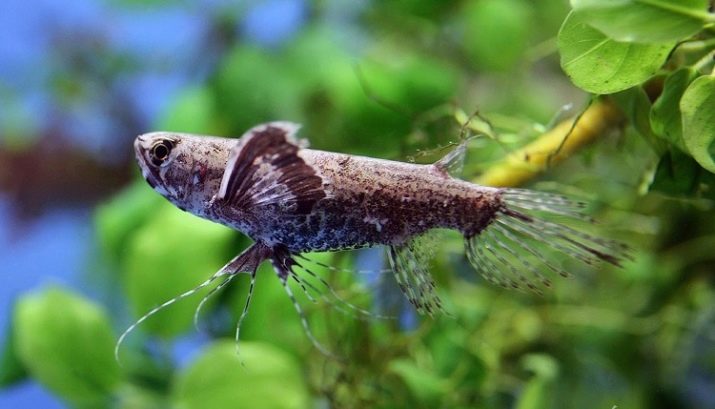
Other freshwater aquarium inhabitants
Let's say a little about those who are still can live in a freshwater aquarium:
- axolotli;
- Amano shrimp;
- dwarf orange cancer;
- vesicular fiza;
- sand melting.
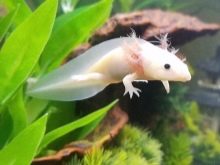
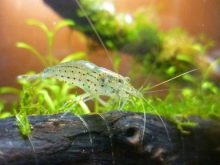
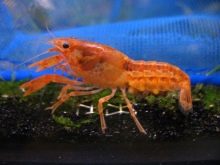
You can find out how to clean the aquarium yourself by watching the video below.
